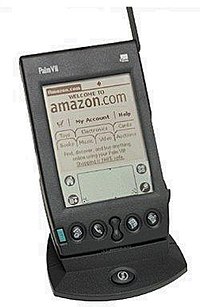
3Com Corporation was an American digital electronics manufacturer best known for its computer network products. The company was co-founded in 1979 by Robert Metcalfe, Howard Charney and others. Bill Krause joined as President in 1981. Metcalfe explained the name 3Com was a contraction of "Computer Communication Compatibility", with its focus on Ethernet technology that he had co-invented, which enabled the networking of computers.

Palm, Inc., was an American company that specialized in manufacturing personal digital assistants (PDAs) and developing software. Palm designed the PalmPilot, the first PDA successfully marketed worldwide, and was known for the Treo 600, one of the earlier successful smartphones. Palm developed the Palm OS software for PDAs and smartphones released under its line of Palm-branded devices and also licensed to other PDA manufacturers.

Internet access is a facility or service that provides connectivity for a computer, a computer network, or other network device to the Internet, and for individuals or organizations to access or use applications such as email and the World Wide Web. Internet access is offered for sale by an international hierarchy of Internet service providers (ISPs) using various networking technologies. At the retail level, many organizations, including municipal entities, also provide cost-free access to the general public.
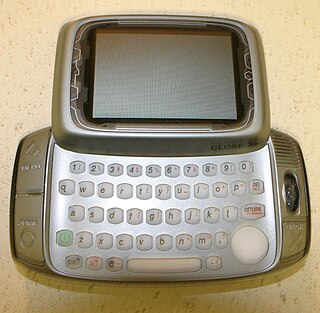
The Danger Hiptop, also re-branded as the T-Mobile Sidekick, Mobiflip and Sharp Jump, is a GPRS/EDGE/UMTS smartphone that was produced by Danger, Inc. from 2002 to 2010.
Verizon is an American wireless network operator that previously operated as a separate division of Verizon Communications under the name Verizon Wireless. In a 2019 reorganization, Verizon moved the wireless products and services into the divisions Verizon Consumer and Verizon Business, and stopped using the Verizon Wireless name. Verizon is the second-largest wireless carrier in the United States, with 144.8 million subscribers as of December 31, 2023. It currently has the largest network in the United States with their LTE network covering 70% of the United States.

Tethering or phone-as-modem (PAM) is the sharing of a mobile device's Internet connection with other connected computers. Connection of a mobile device with other devices can be done over wireless LAN (Wi-Fi), over Bluetooth or by physical connection using a cable, for example through USB.
Push email is an email system that provides an always-on capability, in which when new email arrives at the mail delivery agent (MDA), it is immediately, actively transferred (pushed) by the MDA to the mail user agent (MUA), also called the email client, so that the end-user can see incoming email immediately. This is in contrast with systems that check for new incoming mail every so often, on a schedule. Email clients include smartphones and, less strictly, IMAP personal computer mail applications.
Wireless Application Protocol (WAP) is a technical standard for accessing information over a mobile wireless network. A WAP browser is a web browser for mobile devices such as mobile phones that use the protocol. Introduced in 1999, WAP achieved some popularity in the early 2000s, but by the 2010s it had been largely superseded by more modern standards. Modern phones have proper Web browsers, so they do not need WAP markup for compatibility, and therefore, most are no longer able to render and display pages written in WML, WAP's markup language.

The LG VX10000, also known as the Verizon Voyager or LG VX10K, is an Internet-enabled multimedia smartphone designed by LG Electronics and carried by Verizon Wireless in the US, Telus, and Bell Mobility in Canada, and Reliance in Asia. The external screen is touch enabled with a virtual keyboard and buttons. It features an internal screen for use with the included full QWERTY keyboard. Both screens of the Voyager have WQVGA resolution. The Voyager's functions include those of a camera phone and a portable media player, in addition to text messaging, and Internet services including e-mail and web browsing. It is a dual-band mobile phone that uses the CDMA standard. It supports the EVDO data technology.
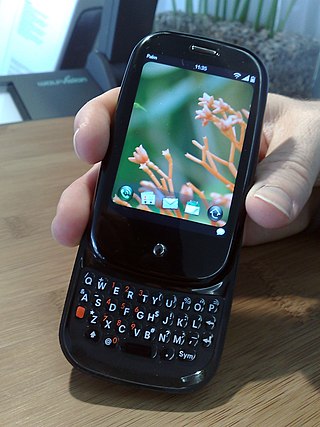
The Palm Pre, styled as palm prē, is a multitasking smartphone that was designed and marketed by Palm with a multi-touch screen and a sliding keyboard. The smartphone was the first to use Palm's Linux-based mobile operating system, webOS. The Pre functions as a camera phone and a portable media player, and has location and navigation capabilities. The Pre also serves as a personal information manager, has a number of communication and collaboration applications, and has Bluetooth and Wi-Fi connectivity built-in.

Kin was a short-lived mobile phone line from Microsoft designed for users of social networking. The phones, aimed at people between ages 15 and 30, were manufactured by Sharp Corporation and sold through Verizon Wireless.

The Palm VIIx was a personal digital assistant made by Palm, Inc. The device featured an antenna used for wireless data communication. Connectivity was provided through the Mobitex network under the now defunct Palm.net service. Web Clipping applications used the network to process data. The cost of service was $14.95 per month and allowed a limited number of web pages to be viewed.
Novarra was a mobile internet software company founded in 2000 and based in Itasca, Illinois, United States. It created web-based services such as web internet access, portals, videos, widgets and advertising for mobile devices. Novarra provided access to the internet and other services through wireless handsets, PDAs and laptops and sold directly to operators, mobile handset manufacturers and internet brand companies. In 2010, Nokia acquired 100% of Novarra's shares.
Palm.net was a wireless data communication service enabling limited wireless access of the World Wide Web, provided for certain Palm, Inc. Personal Digital Assistants. Connectivity was provided through the Mobitex network. Web Clipping applications made use of the network to process data. The cost of service was $14.95 per month, and allowed a limited number of web pages to be viewed. The initial Palm model to be capable of using the service was the Palm VII, which made it the first standalone PDA to be capable of wireless internet access. Later models included the Palm VIIx and Palm i705. The service started in 1999 and was discontinued on August 31, 2004.
SEVEN Networks, Inc. is a privately funded American corporation founded in 2000. It had about 265 employees in 2010. As of 2017, the company has research and development centers in Texas and Finland.
An app store, also called an app marketplace or app catalog, is a type of digital distribution platform for computer software called applications, often in a mobile context. Apps provide a specific set of functions which, by definition, do not include the running of the computer itself. Complex software designed for use on a personal computer, for example, may have a related app designed for use on a mobile device. Today apps are normally designed to run on a specific operating system—such as the contemporary iOS, macOS, Windows, Linux or Android—but in the past mobile carriers had their own portals for apps and related media content.
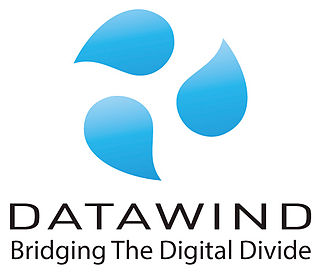
Jeotex, Inc. was a Canadian company that specializing in the development and manufacturing of low-cost tablet computers and smartphones. Founded in Montreal, Quebec, the company aimed to produce tablets primarily for markets in India, Nigeria, the United Kingdom, Canada, and the United States. Joetex gained recognition for creating the "world's cheapest tablet" the Aakash tablet computer, priced at US$37.99 per unit. The Aakash was developed for India's Ministry for Human Resource Development (MHRD).
Republic Wireless was an American mobile virtual network operator (MVNO). Republic sold low cost mobile phone service on partner networks. Republic started as a unique company that provided customers with VOIP numbers which relied on WiFi first with cell as a backup.
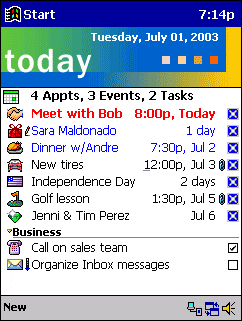
Pocket PC 2000 was the first member of the Windows Mobile family of mobile operating systems that was released on April 19, 2000, and was based on Windows CE 3.0. It is the successor to the operating system aboard Palm-size PCs. Backwards compatibility was retained with such Palm-size PC applications.

Ting Mobile is an American mobile virtual network operator owned by Dish Wireless. Originally established in February 2012 by Tucows, Ting provides cellular service in the United States using the T-Mobile and Verizon networks. The service is sold off-contract with billing that adjusts the cost of service based on actual customer usage.
